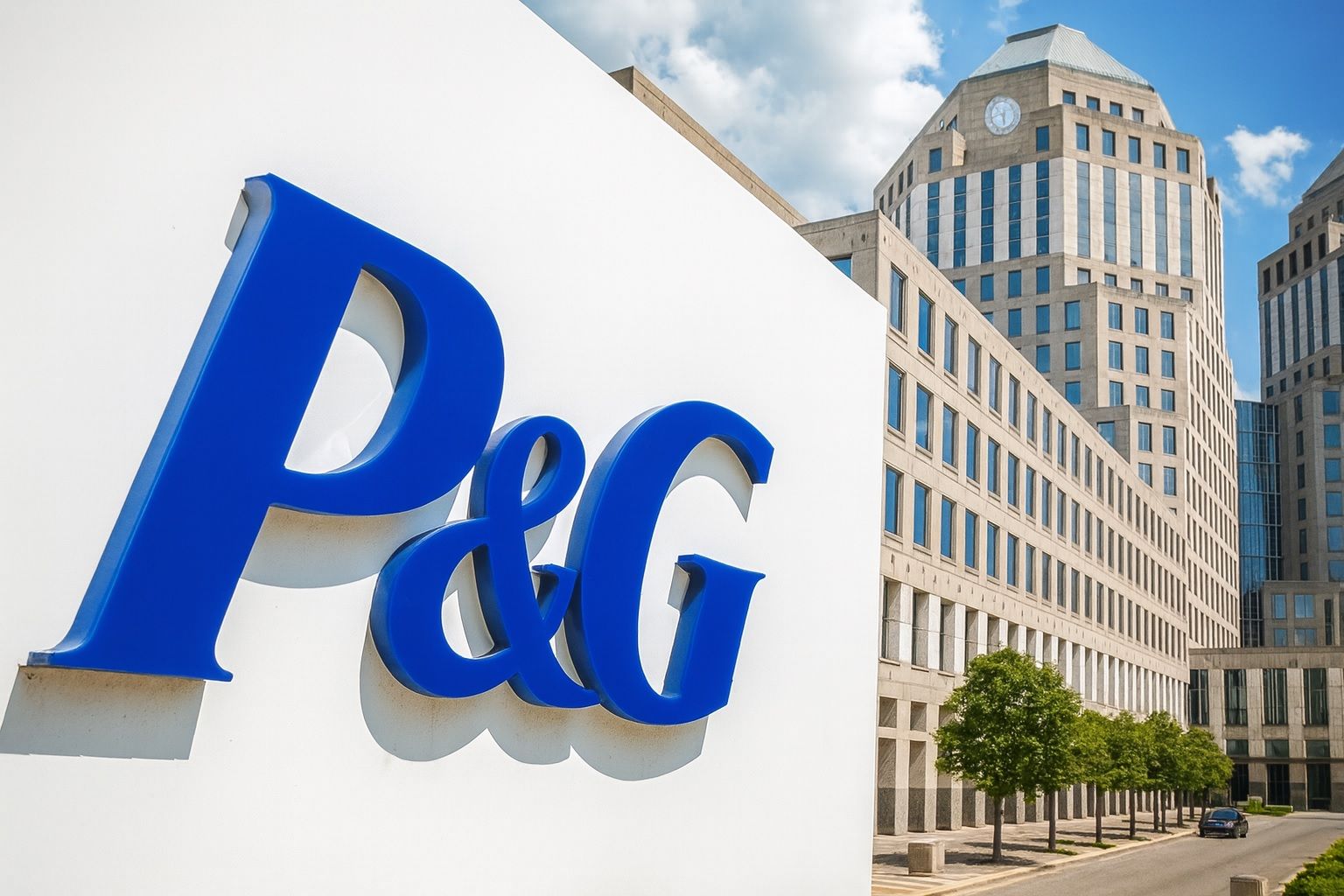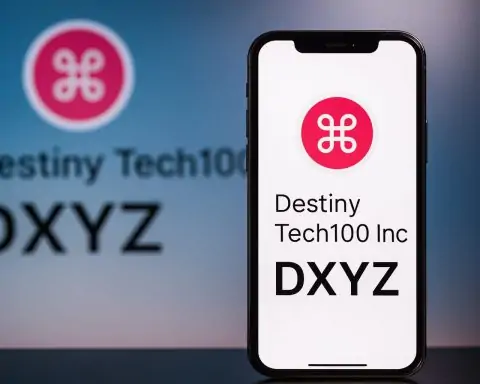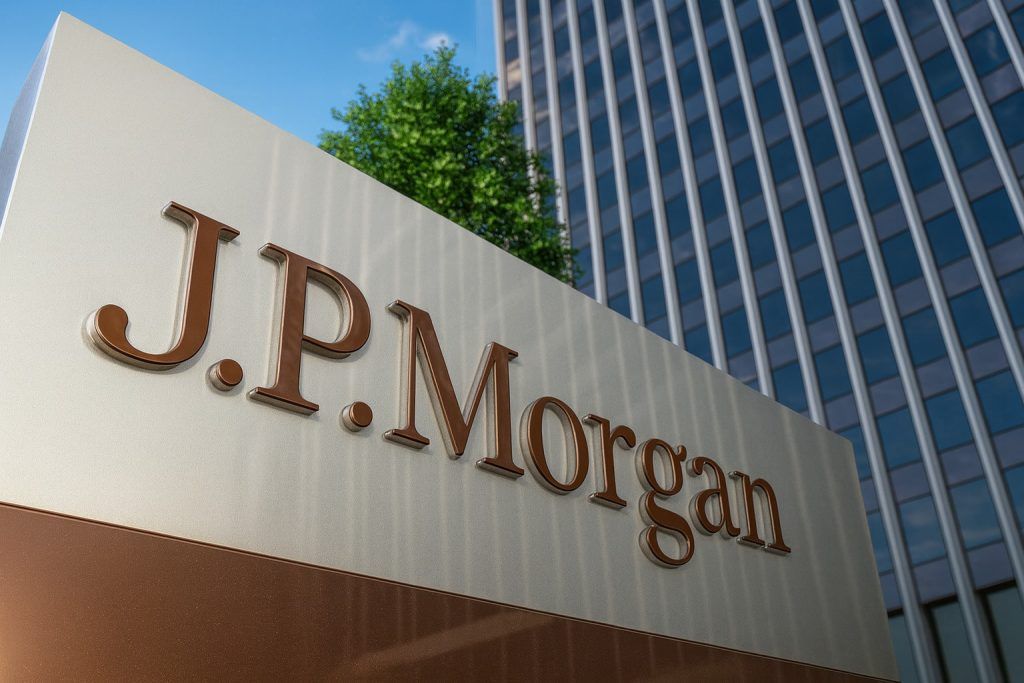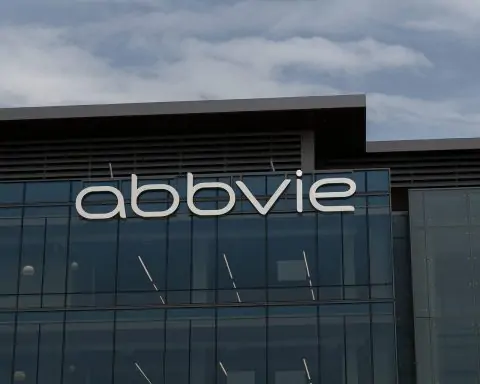- Q1 FY2026 Beat: P&G’s Q1 results (ended Sept 30) topped forecasts – net sales $22.39B (+3% YoY) and adjusted EPS $1.99 versus $1.90 consensus [1] [2]. Organic sales (ex-FX/acquisitions) rose ~2%, driven entirely by higher pricing and a better product mix (volumes were flat) [3]. Beauty and grooming were standout segments (premium brands saw mid-single‐digit growth) [4] [5].
- Guidance Steady: Management reaffirmed full-year 2026 guidance. P&G still expects all-in sales growth of roughly 1–5% and core EPS growth of 3–9% (implying core EPS ~$6.83–$7.09 for FY26) [6] [7]. This implies roughly mid-single-digit earnings growth on top of last year’s $6.83 core EPS.
- Tariff Relief: P&G shaved its expected tariff headwind to ~$400 million (after tax) for FY26, down from $800M, largely due to Canada lifting retaliatory duties [8] [9]. (Analysts note this provides a nice offset to higher commodity costs.) CFO Andre Schulten said recent trade moves (e.g. Canada deal) removed prior worries – though he cautioned the consumer climate is “not great, but stable” [10].
- Analyst Sentiment: Wall Street is generally positive. The consensus rating is around Moderate Buy, and 12-month price targets cluster near ~$170–175 (roughly 10–15% above the current $150 level) [11] [12]. For example, Fintel/Nasdaq reports an average target of $174.90 (16.2% upside) [13]. (Several brokers already raised targets post-earnings – Raymond James bumped its to $175, remaining bullish.)
- Stock Snapshot: P&G shares closed near $150.3 on Oct. 31 [14]. The stock’s forward P/E is ~22×, and it yields about 2.8% annually [15]. P&G remains a dividend darling (135 years of payouts) – in fact, this week it set an $1.0568/share quarterly dividend (vs $1.01 last year) [16].
- Leadership Updates: Big management changes are on deck. CEO Jon Moeller will retire Jan. 1, 2026 (after 8 years as CEO); COO Shailesh Jejurikar (a 30-year P&G veteran) takes over [17]. In the beauty unit, R. Alex Keith (Beauty CEO) will retire Feb. 2026 and be succeeded by Freddy Bharucha [18]. (Long tenures and careful handovers suggest continuity, but investors will watch execution closely.)
Q1 Results: Resilient Core Demand (Beauty & Grooming Drive Growth)
P&G’s latest quarter beat expectations on nearly every metric. The $22.39B net sales (up 3% YoY) reflected a 2% organic gain, entirely from higher pricing and mix [19]. Reported EPS was $1.95 (+21% YoY), driven by last year’s heavy restructuring charges, while core EPS was $1.99 (+3%) [20] [21]. Beauty saw ~6% organic growth (premium skincare/skin-care innovations led the way) and Grooming ~5% growth [22] [23]. By contrast, Fabric/Home Care and Health Care were flat or down slightly on weak volume and heavier discounting [24].
P&G attributed the beat to “strong execution of our integrated strategy” [25] and resilient consumer demand for premium staples. CEO Jon Moeller noted the company is on track “in a challenging consumer and geopolitical environment” [26]. As AJ Bell markets chief Dan Coatsworth observes, many P&G products (beauty, grooming, baby care) are viewed as essential; “shoppers might feel happy paying a little extra if they think the goods are superior” [27]. In other words, P&G’s focus on innovation and brand strength is letting it hold prices even as many consumers pull back on discretionary buys.
Margins & Cash Flow: Gross margin fell ~50bps YoY (tariffs and commodity headwinds ate some profit) [28], but productivity savings helped. Core operating margin was flat to +0.4% on a FX-neutral basis [29]. Importantly, operating cash flow was a robust $5.4B, with ~$3.8B returned to shareholders (dividends and buybacks) in the quarter [30]. Adjusted free cash flow productivity was 102%, underscoring P&G’s cash-generative power even in slow volumes.
Outlook: Steady Guidance, “K-Shaped” Consumers
Management left the FY26 outlook essentially unchanged. P&G still targets about 1–5% all-in sales growth and 3–9% EPS growth (core EPS $6.83–7.09) [31] [32]. This guidance implies roughly +2% EPS growth at midpoint. The narrowed tariff estimate (~$400M headwind) provides some cushion. The key assumption is that the consumer slowdown stays mild. CFO Andre Schulten described a “K-shaped” spending pattern [33]: affluent shoppers are trading up (buying bigger, premium packs at clubs and online), while budget-conscious consumers are trimming usage and delaying purchases on essentials (work-through existing inventory). In his words, the U.S. “consumption across our categories has slowed a little” [34], but it isn’t cratering.
P&G says it’s defending market share by reinvesting in advertising, innovation and value offerings in weaker segments (e.g. diapers, household care). For instance, it exited some underperforming markets (e.g. laundry bars in India/Philippines) and is cutting ~7,000 jobs over 2025–27 to control costs [35]. These moves, along with efficiency programs, helped P&G deliver results that often beat competitors. Even Unilever (P&G’s big peer) reported double-digit U.S. growth in beauty this quarter – a sign that U.S. consumers are still buying premium personal care despite headwinds [36].
After the earnings release (Oct 24 after-hours), P&G stock actually ticked higher in premarket trade (up ~2%) as investors cheered the execution and tariff news [37]. That suggests the report alleviated some investor concerns about slowing demand.
Analysts & Price Targets: Still Bullish on Value and Dividends
Wall Street consensus remains upbeat. Analysts praise P&G’s defensive profile (stable cash flows and growing dividend) and see it as a safe haven if economic growth wobbles. Of the 21–24 firms covering PG, none are outright bearish: the consensus is about 14 buys vs. 8 holds and a median “Moderate Buy” rating. The average 12-month price target is roughly $170–175/share [38] [39]. At a ~$150 share price today, that implies ~10–15% upside. (JP Morgan data show targets ranging $146–$195, averaging $174.90 [40]; MarketBeat reports mean target $171.53 [41].)
Supporting the bullish thesis, P&G’s valuation looks reasonable: forward P/E ~22× is below the S&P average (~39×) and near the sector norms [42]. Dividend investors also like P&G: it has raised its payout for 69 consecutive years and yields ~2.8% [43], which is attractive in a low-growth market. Indeed, one analyst quipped that even if the broader economy stalls, “consumers keep buying what they need even as prices rise,” which bodes well for staples like P&G [44].
There are cautious voices, too: TD Cowen recently trimmed its target citing softer categories, and some worry about mix-shifts. But most agree P&G will grow mid-single digits in profit and comfortably cover the dividend. For example, Morgan Stanley sees 2025 core EPS ~$7.21 [45] (around the midrange of guidance). In short, the Street views P&G as fairly valued right now, with mostly “hold” or “buy” ratings and upside if the company executes.
Market Context: Tech Rally vs. Defensive Staples
The broader market backdrop is optimistic. Late October saw a tech-led rally: blowout earnings from Amazon, Apple and others lifted the Nasdaq and S&P to fresh highs [46] [47]. U.S.-China trade tensions eased (Trump-Xi met to halve tariffs, with U.S. lowering average duties to ~47% from 57% [48]), further fueling equities. Investors are gearing up for more solid growth; over 80% of S&P firms have topped Q3 estimates [49].
For P&G and other staples, this has mixed effects. Defensive stocks lagged the market’s run-up – on Friday, consumer staples and grocery stocks actually dipped slightly even as major indices rose [50]. That’s typical when “risk-on” sentiment prevails. But staples are also seen as a hedge: if any slowdown appears, investors tend to flock to dividend payers. The recent Fed decision (0.25% rate cut) gave markets a jolt, though Chair Powell warned December cuts are not certain [51], reminding traders that rates may stay higher-for-longer. In this uncertain mix, P&G’s steady outlook and yields make it look relatively attractive.
Stock & Dividend Snapshot
Going into Monday, PG stock is around $150 per share [52]. (It closed $150.37 on Oct 31 [53].) Technical signals are mixed: short-term charts show a slight downtrend, but P&G is not far from support around $149.60 and resistance near $152–153 [54]. Our data sources predict a narrow trading range on Nov 3 (roughly $149–152 [55]). Volume and volatility are low, reflecting P&G’s status as a large, liquid blue-chip.
P&G’s dividend was just raised to $1.0568/share (payable Nov 17), continuing 135 years of payouts [56]. At $150, the forward yield is ~2.8%. With a payout ratio around 60% and strong cash flow, analysts expect the dividend to keep rising. (MarketBeat notes a payout ratio ~61%, which is healthy [57].) In short, income investors still prize P&G.
Leadership and Strategic Moves
Investors should note the upcoming leadership shifts. Longtime P&G stalwart Jon Moeller will hand over the CEO reins on Jan. 1, 2026. He will be replaced by Shailesh Jejurikar, the current COO and a 30-year company veteran [58]. In Beauty, CEO R. Alex Keith (36 years at P&G) will retire Feb. 2026, with Freddy Bharucha (current head of Personal Care) taking her spot [59]. P&G emphasizes continuity: Jejurikar and Bharucha both rose through the ranks. Still, any transition can create uncertainty, so markets will watch guidance and strategy closely during the handover.
Another change: late Oct filings showed large funds trimming P&G exposure slightly, though overall institutional interest remains high [60]. Any swing trade or 13F chatter is usually noise for a stock this size, but it’s worth monitoring if any big new stakes emerge.
Outlook: What to Watch on Monday
Heading into the Nov 3 open, P&G sits in a generally bullish market. If tech and cyclical stocks continue to lead, P&G might trade quietly or drift with the market rather than spike on its own news. Key near-term drivers will be any late earnings updates (P&G already reported Q1) and inflation data. With the Fed paused and a trade truce in place, focus returns to fundamentals: watch consumer spending indicators. Retail sales and reports on grocery pricing (e.g. Walmart, Costco) could hint at headwinds or tailwinds for P&G.
Analysts will be watching for any signs of a consumer pullback. So far, P&G’s message is that shoppers are “hanging in there” [61], especially in non-discretionary categories. Any unexpected commentary (e.g. more discounting) could jolt the stock. However, given that guidance was affirmed and analysts still see the stock as fairly valued, most forecasts expect only modest moves: technical models predict a trading range around the $149–152 level on Monday [62] [63], absent fresh catalysts.
In summary, P&G appears positioned to hold its ground: it has solid earnings, consistent cash returns, and a conservative outlook. The main risks are a deeper consumer slowdown or geopolitical shocks (e.g. tariffs or supply issues). As one strategist put it, P&G’s staples are “necessity-driven” – that makes them a defensive play if the cycle sours [64]. For now, analysts largely believe P&G’s pullback since late summer was temporary. The stock’s current price reflects careful optimism: it’s up a bit in the past month, and analysts’ models (e.g. coincodex) predict it to remain around $150–152 in early November [65] [66].
Sources: Recent earnings releases and filings [67] [68], news reports and analyst commentary [69] [70], and market data [71] [72]. Citations above refer to newswire and industry reports (Reuters, TechStock², etc.) for all figures and quotes.
References
1. ts2.tech, 2. www.ad-hoc-news.de, 3. www.ad-hoc-news.de, 4. ts2.tech, 5. www.ad-hoc-news.de, 6. ts2.tech, 7. www.ad-hoc-news.de, 8. ts2.tech, 9. www.ad-hoc-news.de, 10. www.reuters.com, 11. ts2.tech, 12. www.nasdaq.com, 13. www.nasdaq.com, 14. coincodex.com, 15. www.marketbeat.com, 16. www.investing.com, 17. www.businessoffashion.com, 18. www.businessoffashion.com, 19. www.ad-hoc-news.de, 20. www.pginvestor.com, 21. www.ad-hoc-news.de, 22. ts2.tech, 23. www.ad-hoc-news.de, 24. www.ad-hoc-news.de, 25. www.pginvestor.com, 26. www.pginvestor.com, 27. www.reuters.com, 28. www.ad-hoc-news.de, 29. www.pginvestor.com, 30. www.pginvestor.com, 31. ts2.tech, 32. www.ad-hoc-news.de, 33. www.ad-hoc-news.de, 34. www.reuters.com, 35. www.reuters.com, 36. www.reuters.com, 37. www.ad-hoc-news.de, 38. ts2.tech, 39. www.nasdaq.com, 40. www.nasdaq.com, 41. www.marketbeat.com, 42. www.marketbeat.com, 43. www.marketbeat.com, 44. ts2.tech, 45. www.nasdaq.com, 46. ts2.tech, 47. ts2.tech, 48. ts2.tech, 49. ts2.tech, 50. ts2.tech, 51. ts2.tech, 52. coincodex.com, 53. coincodex.com, 54. stockinvest.us, 55. stockinvest.us, 56. www.investing.com, 57. www.marketbeat.com, 58. www.businessoffashion.com, 59. www.businessoffashion.com, 60. www.nasdaq.com, 61. www.reuters.com, 62. stockinvest.us, 63. coincodex.com, 64. ts2.tech, 65. coincodex.com, 66. stockinvest.us, 67. www.pginvestor.com, 68. www.ad-hoc-news.de, 69. ts2.tech, 70. www.reuters.com, 71. coincodex.com, 72. www.nasdaq.com








